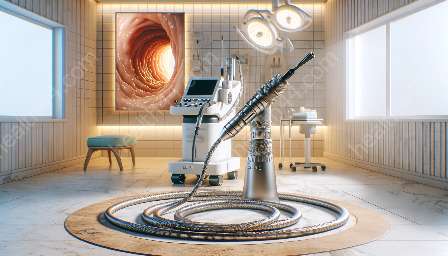As technology continues to advance in the medical field, the requirements for proper storage of sensitive equipment such as endoscopes become increasingly crucial. Endoscope storage cabinets play a vital role in maintaining the integrity of endoscopes and other medical devices and equipment. This article explores the significance of endoscope storage cabinets in ensuring the safety and functionality of these essential tools, as well as best practices and considerations for selecting the right storage solutions.
Importance of Endoscope Storage Cabinets
Endoscopes are delicate and sophisticated medical devices that require precise handling and storage to maintain their functionality and lifespan. They are used in various medical procedures, including diagnostics and minimally invasive surgeries, making their proper storage a critical aspect of healthcare facilities' operations.
Endoscope storage cabinets are designed to provide a controlled environment that protects these valuable instruments from detrimental environmental factors such as temperature fluctuations, humidity, and dust. By safeguarding endoscopes within specialized cabinets, healthcare providers can mitigate the risk of damage and contamination, ultimately contributing to improved patient safety and operational efficiency.
Compatibility with Endoscopes
Endoscope storage cabinets are engineered to accommodate the specific requirements of endoscopes, taking into consideration their size, shape, and delicate components. These cabinets feature adjustable storage compartments and secure mounting systems to ensure that endoscopes are stored in a manner that minimizes the risk of damage.
Furthermore, specialized features such as climate control, air filtration, and sterilization capabilities are often integrated into these cabinets to create an optimal storage environment for endoscopes. This compatibility is essential in preserving the functionality and integrity of endoscopes, ultimately extending their service life and reducing the need for frequent repairs or replacements.
Compatibility with Other Medical Devices & Equipment
Aside from endoscopes, many healthcare facilities also require storage solutions for various other medical devices and equipment. Endoscope storage cabinets are designed to be versatile and adaptable, allowing them to accommodate a range of specialized medical instruments, including but not limited to surgical cameras, light sources, and related accessories.
These cabinets are equipped with customizable storage configurations and adjustable shelving to accommodate different types of medical equipment efficiently. This versatility not only helps in optimizing storage space but also ensures that all critical medical tools are organized and readily accessible when needed, thereby contributing to streamlined workflow and enhanced clinical efficiency.
Considerations for Selecting Endoscope Storage Cabinets
Choosing the right endoscope storage cabinets involves careful consideration of various factors to ensure that the selected solution meets the specific needs and requirements of the healthcare facility.
Size and Capacity
It is essential to assess the volume of endoscopes and other medical devices that need to be stored to determine the appropriate size and capacity of the storage cabinets. Factors such as anticipated growth in equipment inventory should also be taken into account to ensure future scalability.
Environmental Control
Endoscope storage cabinets with advanced environmental control features, such as temperature and humidity regulation, are crucial in providing an optimal storage environment. These features are designed to prevent the degradation of delicate instrument components and ensure equipment readiness at all times.
Sterilization Capabilities
Some endoscope storage cabinets offer integrated sterilization capabilities to facilitate the decontamination and sterilization of instruments within the storage unit itself. This feature can streamline the sterilization process, contributing to operational efficiency and infection control.
Compliance with Regulations
It is imperative to select endoscope storage cabinets that comply with relevant industry standards and regulations, such as those outlined by regulatory bodies like the FDA and the Center for Disease Control and Prevention (CDC). Adhering to these standards ensures that the cabinets are designed and manufactured to meet stringent safety and quality requirements.
Integration with Information Systems
Integrating endoscope storage cabinets with healthcare facility information systems can facilitate inventory management, equipment tracking, and maintenance scheduling. This integration enables efficient resource allocation and helps in maintaining an accurate record of instrument usage and maintenance history.
Conclusion
Endoscope storage cabinets are indispensable assets in healthcare facilities, playing a pivotal role in safeguarding the integrity of endoscopes and other critical medical devices and equipment. By providing a controlled and secure storage environment, these cabinets contribute to the preservation of instrument functionality, operational efficiency, and patient safety.
When selecting endoscope storage cabinets, healthcare providers should carefully evaluate the compatibility of the cabinets with endoscopes and other medical equipment, as well as consider various factors such as size, environmental control, sterilization capabilities, regulatory compliance, and integration with information systems. By adhering to best practices in selecting and utilizing these specialized storage solutions, healthcare facilities can ensure the longevity and optimal performance of their valuable medical instruments.


